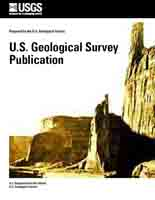Introduction
The Stafford 7.5-minute quadrangle, comprising approximately 55 square miles (142.5 square kilometers) of northeastern Virginia, is about 40 miles (mi) south of Washington, D.C. The region's main north-south transportation corridor, which connects Washington, D.C., and Richmond, Va., consists of Interstate 95, U.S. Highway 1, and the heavily used CSX and Amtrak railroads. Although the northern and eastern parts of the Stafford quadrangle have undergone extensive suburban development, the remainder of the area is still dominantly rural in character. The town of Stafford is the county seat.
The Stafford 7.5-minute quadrangle is located in the Fredericksburg 30'x60' quadrangle, where information on the regional stratigraphy and structure is available from Mixon and others' (2000) geologic map and multichapter explanatory text. In addition to straddling the 'Fall Zone' boundary between the Appalachian Piedmont and the Atlantic Coastal Plain provinces, this quadrangle contains the best preserved and best studied segment of the Stafford fault system, an important example of late Cenozoic faulting in eastern North America (Mixon and Newell, 1977). This 1:24,000-scale geologic map provides a detailed framework for interpreting and integrating topical studies of that fault system.
Our geologic map integrates more than two decades of intermittent geologic mapping and related investigations by the authors in this part of the Virginia Coastal Plain. Earlier mapping in the Piedmont by Pavlides (1995) has been revised by additional detailed mapping in selected areas, particularly near Abel Lake and Smith Lake, and by field evaluation of selected contact relations.


